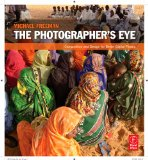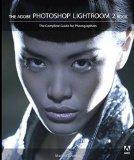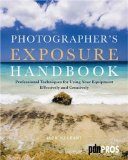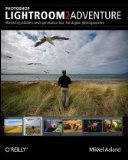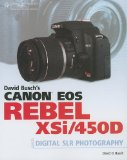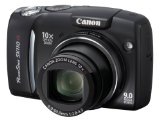 In a previous post I outlined my requirements for a perfect point-and-shoot while simultaneously lamenting the fact that the Olympus E-P1 didn’t fulfill my wishes. I seriously considered several cameras – from the Sigma DP1 and DP2 to the Canon G9/G10. What I didn’t count on was falling in love with a littler camera at half the price (roughly $230). I ended up purchasing a Canon Powershot SX110IS – the link for all the tech specs and more from Amazon is here
In a previous post I outlined my requirements for a perfect point-and-shoot while simultaneously lamenting the fact that the Olympus E-P1 didn’t fulfill my wishes. I seriously considered several cameras – from the Sigma DP1 and DP2 to the Canon G9/G10. What I didn’t count on was falling in love with a littler camera at half the price (roughly $230). I ended up purchasing a Canon Powershot SX110IS – the link for all the tech specs and more from Amazon is here .
.
Granted, this little camera has very few of my absolute requirements for the perfect point-and-shoot. But that’s okay – I went in to the purchase knowing that no perfect point-and-shoot existed. The Sigmas, while their image quality is excellent, are slow as molasses. The Olympus was just too expensive (fix the LCD screen and focusing speed, and I might reconsider), and the Canon G9 and G10 looked promising, but were ultimately overpriced when considering only image quality. (If I’m going to spend $500+ on a point-and-shoot, it had best have fantastic image quality. While good, the G10 is not excellent in this regard.)
And so I found myself playing with this little guy in the store, and very quickly fell in love with it. The controls are fantastic – it has the rotating dial in the back, which I adore, and it has a very nice 10x optical zoom (36-360mm equivalent). It only has 9 megapixels, which considering the 1/2.3” sized sensor is a good thing – this sensor is way too small for anything more (and really, it should only have 6 or 7MP). It also has a full range of advanced modes, including Av, Tv, and M. While one can argue about the benefits of these modes on such a small camera, I still find that I live in Av, even though the camera doesn’t have nearly the ranges my dSLR has. (It can go from f/2.8 to f/8.0 at 6mm, and f/4.3 to f/8 at 60mm.)
The camera also provides manual focusing controls, which are the best I’ve used on any point-and-shoot camera to date, and I can’t imagine any better, short of being able to have a focus ring on the lens. The camera can be set up to automatically enlarge a portion of the scene in order to help you achieve focus.
One unexpected bonus is the camera’s macro abilities. It can focus at 1cm (!!) at 6mm, which makes this thing literally able to focus on anything. It does have to be turned on – otherwise the camera limits the focus to about 12 – 18 inches. And, once you move out of 6mm, the 1cm macro focus is no longer an option. Even so, when most other point-and-shoots can go no closer than 5cm (if that), 1cm is fantastic!
It does lack a viewfinder of any kind, but at $230, I don’t expect one. The screen isn’t 930k pixels, either, but again, $230 doesn’t buy a screen that nice. That said, the SZ110is’s screen is a nice screen, even if it is only 230k pixels. And while the 10x zoom is very appreciated (and the included image stabilization helps quite a bit), there is a fair amount of barrel distortion at the wide end, and pincushion at the telephoto end. It’s nothing that can’t be fixed in Photoshop, but it’d be nice not to have to worry about it all.
It does support video recording, but unfortunately it maxes out at 640x480. Quality is good, but HD would’ve been even nicer. I don’t do a lot of video, so this isn’t something I worry about much.
It also natively lacked the ability to record in RAW. While it does a very nice job with JPGs, I’ve come to enjoy the versatility of RAW images – something the Canon G9/G10, and the other contenders, supported out of the box. But the individuals over at CHDK remedied that problem by having a beta version of their enhancements for the camera available for download. It’s really more of an “add-on” than a firmware update, because it never modifies the original firmware. It lives on the SD card and can be turned on and off at will.
CHDK does a great many things – far too many to elaborate on. It can be used to override various settings in the camera – even if the camera itself doesn’t support it (like bracketing or Av/Tv modes on lesser models), but what most attracted me was the ability to shoot in RAW, which means that I now have 10-bit per channel RAW images that I can edit in Lightroom or Photoshop, rather than 8-bit JPGs. Those extra two bits help a lot – going from 256 values to 1024 values per channel. The downside is that these files are larger, and require more time to process in camera (especially if using DNG auto-convert). (One slight problem with the DNGs out of camera: Lightroom and other RAW processors do NOT handle the color correctly – CHDK is beta, after all – but it was a problem easily fixed by applying a DNG profile to fix the problem; links at end of post).
CHDK is not for the faint of heart – it takes a bit of knowledge to get the files onto the SD card (and don’t use anything >4gb), and once you’ve got it properly installed, you’ll run your camera flat trying to figure out the best settings for you. But once you figure all that out, you’ll have an insanely powerful little camera in your hands! And even if you decide not to apply CHDK, the SX110 IS is a fantastic camera that still offers a good bit of manual control for those of us who are control freaks like that!
Overall, the SX110is is a point-and-shoot I’m happy with, especially with the addition of CHDK to the feature list. Image quality is good (although I’ll go no higher than ISO 200 except in dire circumstances – and don’t even bother at ISO 1600+), the zoom range is very useful, the macro ability is amazing, and the manual modes are very nice to have – especially manual focusing. And for $230, it is half the price of a G10, which ultimately made the decision to get this little guy instead a very easy one indeed.
CHDK:
SX110 IS DNG Profile Links:
SX110IS at Amazon:








